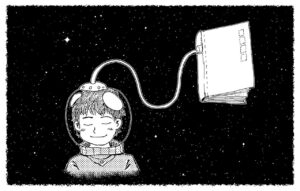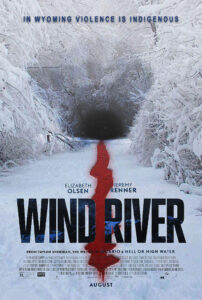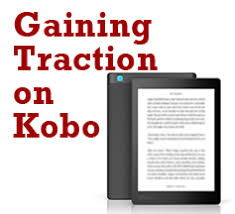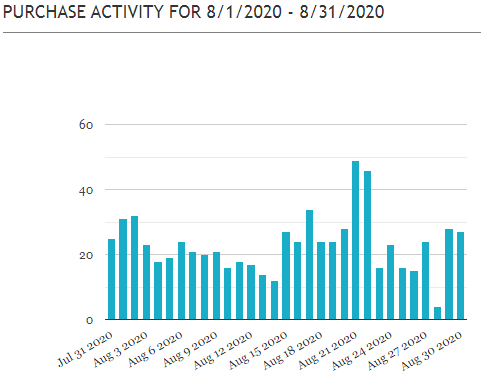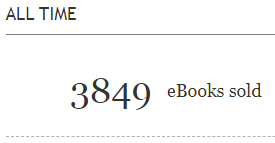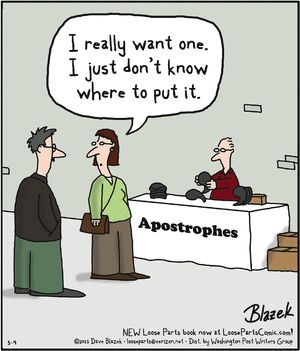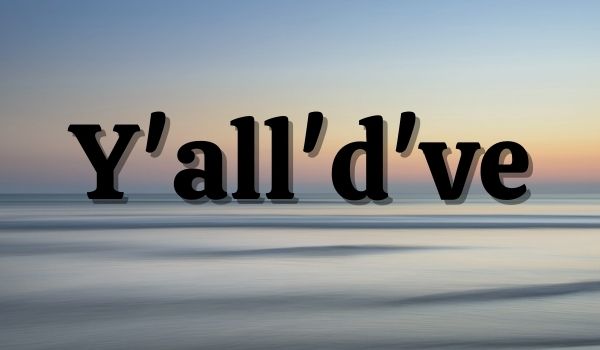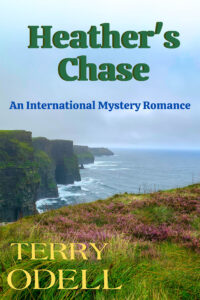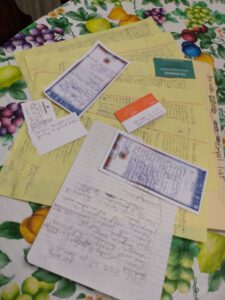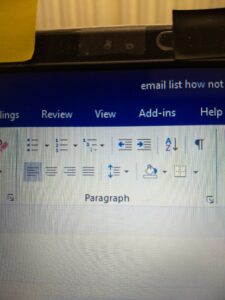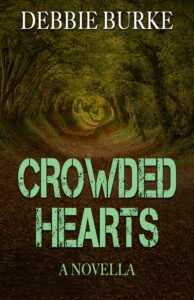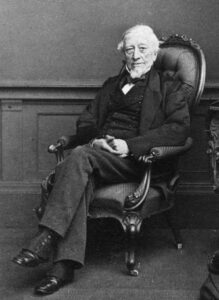By PJ Parrish
As I’ve often said here, I am not well read in YA fiction. In my day, A Separate Peace was the big young adult hit, and I recall really liking S.E. Hinton’s The Outsiders. And a couple years back, stranded in a vacation house, I plowed through three Harry Potters and liked them all. But anything newer or edgier than that, well, I’m at a loss.
That caveat thrown out there, I offer today’s First Pager, and suggest that I have to judge it purely on its own merits as successful storytelling for any age group. And pose the question: Is Lord of the Flies seminal YA? Back in a flash…
Prey For Love
Sean
Eddie passes out before I can dive into the official breakup convo. Now he lies, naked, sprawled on his unmade twin bed that never felt big enough for two. Loud snores fill the apartment while I hunt through his ramshackle studio trying not to forget any small scraps of my life. Once I leave I’ll never be back.
It would be easy to lose something important amidst the piles of record albums, turntables, and DJ equipment—including three giant disco balls—that clutter his tiny apartment. Luckily I didn’t arrive with much.
“Goodbye, Eddie,” I whisper as I brush a lock of hair from his handsome brow.
It wasn’t supposed to end like this. My first summer love. My first serious love. My first shattered heart. Four months ago I thought I’d I’d never had a boyfriend. Ever. I mean, I’m no catch.
Antisocial? Hell, yeah. I’d rather snuggle with a book than a boy. Pretty? With my various disabilities, eyebrows as dark as thunderclouds, and a jaw too brickish to look feminine I vote—definitely not. Yet Eddie thought I was gorgeous. But he is, well he is Eddie. Say no more.
Backpack slung over one shoulder, guitar the other I leave. Gently shutting the door, I lock it and slide the tarnished key he gave me beneath. I rummage through my handbag to make sure I have my wallet and phone.
Don’t stall. Get moving. Go before you change your mind.
When I moved to NYC from upstate New York for the summer I moved for him. Well, for him and to take the apprentice exam at the Institute for Magical Conservation. It is there that I will study Lore. My lifelong dream. However, my apprenticeship doesn’t start until the fall. I didn’t need to be in this big, stinking city for any reason except for love.
Now that love is gone. Mostly. Eddie killed it. I turn and hobble down the five flights of stairs I’ve come to know well over the past two months.
“Kat? Kat!” Eddie’s voice rings down from the top of the stairs just as I reach the landing. I dart out the door and into the East Village side street. I limp down the block fast as I can manage. Grabbing my phone I call my aunt.
__________________
We’re back. Well…well, well, well. What can I say? Except that I would definitely read on. And from this old set-in-her-reading-ways wombat, that’s probably the best compliment I can give.
There is so much going on here that’s right in this submission. So, let’s use it as an object lesson to talk about how a good writer tosses the craft balls in the air and keeps them juggling.
Start with voice. (character’s, not author’s…subtle but important difference. More to come on that in a sec.) The narrator’s voice is clear as a bell. We know this girl right from get-go. She’s smart and self-aware, but also very human in her self-deprecation. I’d guess she’s late teens, early twenties, but we needn’t know exactly yet. I like this girl, too, like the fact she’s faced a broken heart and has the gumption to get up and leave. Even though she’s a bit of a coward sneaking off in mid-snore, but that’s human, too, no?
Re character voice vs author voice. Character voice is the speech, thoughts, and actions of your people, conveyed in a consistent and believable narrative pattern so readers buy into the idea they are encountering a “real” person. When it’s done well, like here, it’s a powerful sleight of hand, maybe the writer’s most powerful tool because it creates the crucial empathetic bond for the reader. Now, author voice refers to a writer’s style, the quality that makes their writing unique, a sort of summation of your view of life and the world. Your writer’s voice should be singularly yours, so much so that your book can’t be mistaken for anyone else’s. Not every novel achieves this. But the best ones always do. In this short sample, we can’t get a true sense of the writer’s voice, but I suspect over 300 pages or so, it might be there.
Let’s talk now about structure. Notice how the writer varies their use of short and long sentences and graphs. It scans well to the eye on the page; that increases interest. The snippets of dialogue are given their own lines to breathe. (with one small exception).
The first graph is juicy. We’re dropped in mid-drama here, Kat sneaking away from a flamed out love. The opening line is good, and I like the last line of the opening: “Once I leave, I’ll never be back.” (I wonder if that’s true!)
Note how adroitly the writer slips in Kat’s backstory — just enough to intrigue us, ground us in her current status, yet not enough to clog up the narrative. Backstory should tease, never bore.
Okay, let me bring out the red pencil and do a line edit.
Prey For Love I like the title. Double entendres often work well.
Sean the submission came with this tacked on; I assume it’s a subtitle? Not sure it’s needed but would need to see more chapters to say.
Eddie passes out before I can dive into the official breakup convo. I tripped over this but I’m older than dirt and finally figured out it’s slang for conversation. Duh. Now he lies, naked, sprawled on his unmade twin bed that never felt big enough for two. Very nice for two reasons: Goes to character voice and backstory Loud snores fill the apartment while I hunt through his ramshackle studio small and fixable redundancy trying not to forget any small scraps of my life. Once I leave I’ll never be back.
It would be easy to lose something important amidst the piles of record albums, turntables, and DJ equipment—including three giant disco balls—that clutter his tiny apartment. Luckily I didn’t arrive with much. More backstory but also tells us something about the girl herself. She travels light in life.
“Goodbye, Eddie,” I whisper as I brush a lock of hair from his handsome brow. Dialogue should always be set off by itself.
It wasn’t supposed to end like this. My first summer love. My first serious love. My first shattered heart. Four months ago I thought I’d I’d never had a boyfriend. Ever. I mean, I’m no catch. More backstory, but the writer stops before it gets turgid. Big thing for beginners to learn: Less is more with backstory in early going. Also, notice how the line “I’m no catch” works as a bridge to the next graph.
Antisocial? Hell, yeah. I’d rather snuggle with a book than a boy. Now, this is important so pay attention: With first person POV it is really hard to give readers a portrait of your narrator because you can only describe her through her own consciousness. Notice how much this character tells you about herself via quick thoughts. She’s no empty-brain Barbie. Pretty? With my various disabilities, should writer be specific here as to what kind of disability? I didn’t get it was physical on first read. See later comment eyebrows as dark as thunderclouds, and a jaw too brickish to look feminine SO HARD to give a physical idea of a protag. But I betcha you can see this girl in your mind. I vote—definitely not. Yet Eddie thought I was gorgeous. But he is, well, need an extra comma here he is Eddie. Say no more.
Backpack slung over one shoulder, guitar the other another character crumb slyly dropped in. This is how you SHOW us she’s a musician rather than having her TELL us with something clumsy like: “I had always wanted to play the guitar…” I leave. Gently shutting the door, I lock it and slide the tarnished key he gave me beneath. I rummage through my handbag to make sure I have my wallet and phone.
Don’t stall. Get moving. Go before you change your mind. Generally, put a stand alone thought like this in itals.
When I moved to NYC chance to be more specific — you tell me later it’s the East Village. I’d put it here. BUT: take note that the writer has easily told us WHERE WE ARE in the first 400 words. Nice. from upstate New York for the summer I moved for him. Well, for him and to take the apprentice exam at the Institute for Magical Conservation. As far as I can tell, this is made-up but I love it because it poses questions. What kind of world are we in where magic needs to be conserved? When I Googled this, I did find there is an actual course at Lund University in Switzerland called “Fantastic beasts and why to conserve them: animals, magic and biodiversity conservation.” Is our Kat character is off to study some such esoterica? Again, I would read on…It is there that I will study Lore. My lifelong dream. However, my apprenticeship doesn’t start until the fall. I didn’t need to be in this big, stinking city for any reason except for love.
Now that love is gone. Mostly. Eddie killed it. Not unsure this doesn’t need one more thought. Did she have any role in this bad turn? I turn and hobble Stumbled on this at first then realized you told me earlier she has a disability. Does it need to be more clear? Just asking for the hive here down the five flights of stairs I’ve come to know well over the past two months. Writer has grounded us in time.
“Kat? Kat!” This is a different character talking, so set it off by itself.
Eddie’s voice rings down from the top of the stairs just as I reach the landing. I dart out the door and into the East Village side street. Be specific. Out on to Third Ave or head toward Tomkins Square? I limp down the block fast as I can manage. Grabbing my phone I call my aunt.
So, to sum up, take a read through the submission again and see how the writer juggles these balls in less than 500 words:
- Told us the first person narrator’s name.
- Gave us a hint of her appearance and age-range
- Identified where we are
- Dropped us into a decisive moment that is impelling the character toward change.
- Provided enough backstory to define the narrator
- Gave us a good snapshot of Eddie
- Told us what the character is striving for — something to do with magic conservation.
Thanks, writer, for a good time. So..would you guys read on?

